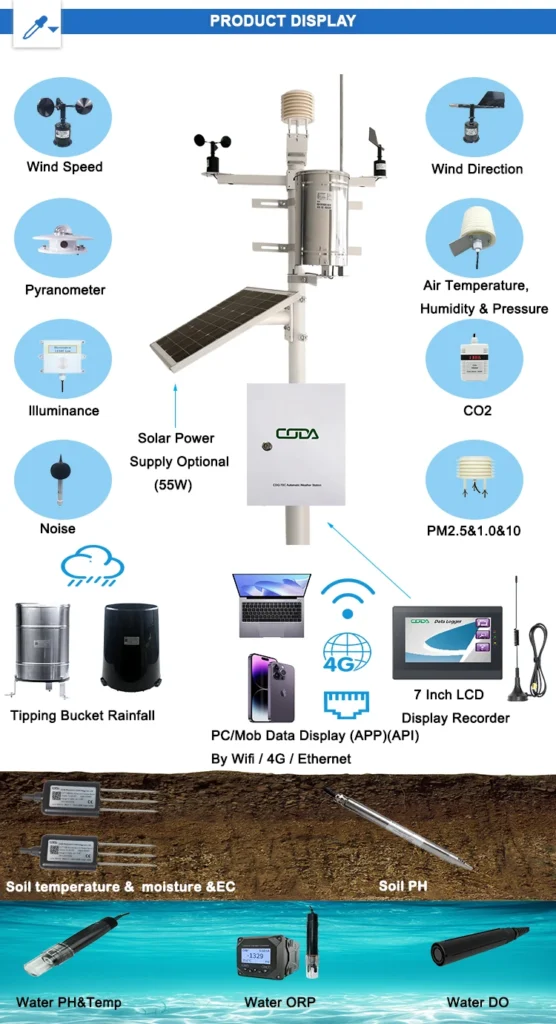What Are IoT Sensors and Devices?
In today’s fast-changing tech world, the Internet of Things (IoT) is a strong force. At the heart of this change are IoT sensors and devices. These parts connect the physical world to the digital world.
This allows for smooth data flow and smart interactions. It is important to know what IoT sensors and devices are. This knowledge helps us see the full potential of the IoT ecosystem.
Defining IoT Sensors and Devices
IoT sensors are special devices. They are designed to find and measure changes in the environment or physical conditions. They change real-world data like temperature, humidity, motion, light, or air quality into digital signals. These signals can be processed, sent, and analyzed.
A temperature sensor can measure the room’s temperature. It then sends this information to a central system. IoT devices are more complete units. They can do many tasks and often include several sensors.
These devices can speak, do math, and take action based on the information they get. Smart thermostats can feel the temperature and connect to Wi-Fi. They change heating or cooling systems when needed. These devices are a good example of IoT technology.
How IoT Sensors and Devices Work
IoT sensors work by changing one form of energy into another. They use different sensing elements. They use thermistors to measure temperature.
They use capacitive sensors to detect humidity. For motion sensing, they use piezoelectric materials.
When the target physical quantity changes, the sensing element’s properties change too. Then, this change turns into an electrical signal. People often boost, filter, and convert this electrical signal before sending it to a microcontroller or gateway device.
IoT devices can process data from sensors on-site. They can also send this data to the cloud for further analysis. They use tools like Wi-Fi, Bluetooth, Zigbee, and cellular networks to send and receive data.
A smart security camera is an IoT device. It uses image sensors to capture video. It can check the video for motion. Then, it sends alerts and video clips to a user’s smartphone through the Internet.
Types of IoT Sensors and Devices
IoT Sensors
Environmental Sensors: These are widely used to monitor aspects of the natural or built environment. Temperature sensors are common in HVAC systems, greenhouses, and data centers to maintain optimal temperature conditions. Humidity sensors are often used with temperature sensors. They help monitor moisture levels. This is important in agriculture for crop growth. It is also vital in museums to preserve artifacts. Air quality sensors find pollutants like dust, carbon monoxide, and harmful chemicals. They help keep indoor and outdoor spaces healthy.
Motion and Proximity Sensors: Motion sensors, such as passive infrared (PIR) sensors, help security systems find people or animals. They can also be found in smart lighting systems, automatically turning lights on when motion is detected. Proximity sensors measure how far apart objects are.
Biometric Sensors: These sensors are used to identify individuals based on their unique physical characteristics. Fingerprint sensors, iris scanners, and heart rate monitors are examples of biometric IoT sensors. For security purposes, manufacturers increasingly apply them in smartphones, and in healthcare wearables, professionals use them to monitor patients’ vital signs.
IoT Devices
Smart Home Devices: This category includes a wide range of products designed to enhance comfort, convenience, and energy efficiency. Smart speakers like Amazon Echo and Google Home can connect to other smart devices in the home. This lets users control lights, thermostats, and security systems with their voice. Smart plugs enable users to remotely control the power supply to appliances, helping to save energy.
Industrial IoT (IIoT) Devices: In the industrial sector, IoT devices are used to optimize processes, improve productivity, and enhance safety. Industrial sensors can check how machines are working. They monitor things like vibration, temperature, and pressure. This helps find early signs of equipment failure. People can remotely monitor and control programmable logic controllers (PLCs) integrated with IoT capabilities, enabling predictive maintenance and reducing downtime.
Wearable Devices: Fitness trackers, smartwatches, and medical monitoring devices are popular wearable IoT devices. They use sensors to track physical activity, heart rate, sleep patterns, and other health – related metrics.
Applications of IoT Sensors and Devices
The applications of IoT sensors and devices span across multiple industries. In agriculture, sensors can monitor soil moisture, nutrient levels, and weather conditions, allowing farmers to optimize irrigation, fertilization, and crop management. In healthcare, remote patient monitoring devices help doctors check patients’ health in real-time. This improves care quality and lowers hospital readmissions. In transportation, people use IoT devices for vehicle tracking, traffic management, and predictive maintenance of fleets.
In conclusion, IoT sensors and devices are key parts of the Internet of Things. They allow objects to talk, work together, and make smart choices. As technology keeps advancing, we can expect more new and different IoT sensors and devices to appear. These will change how we live, work, and interact with our environment.
